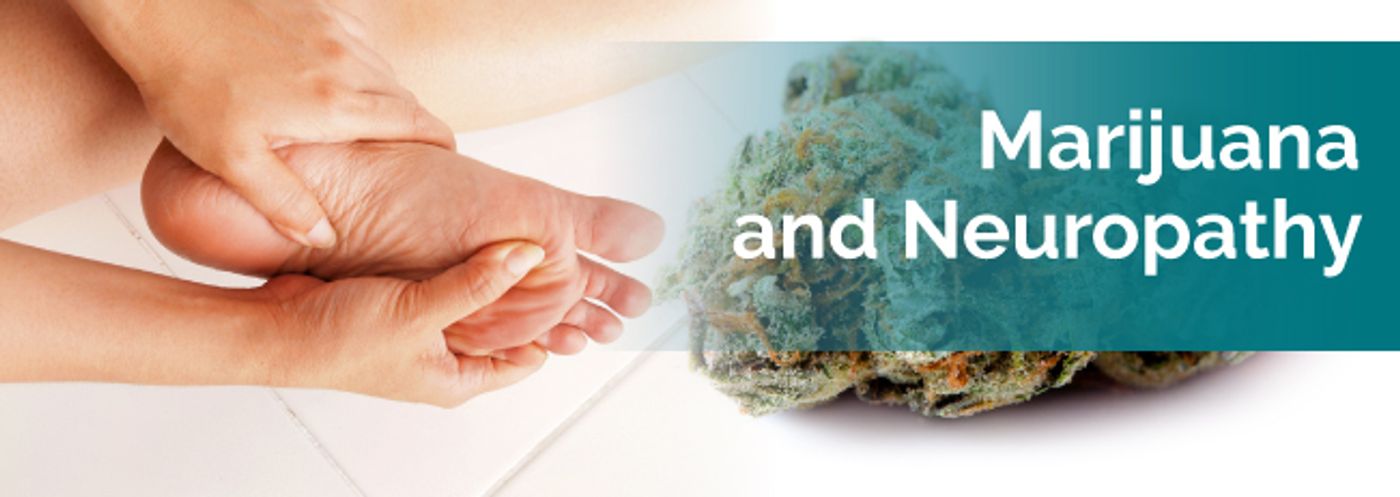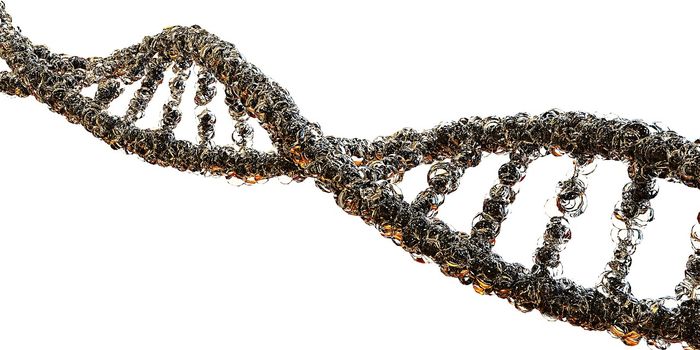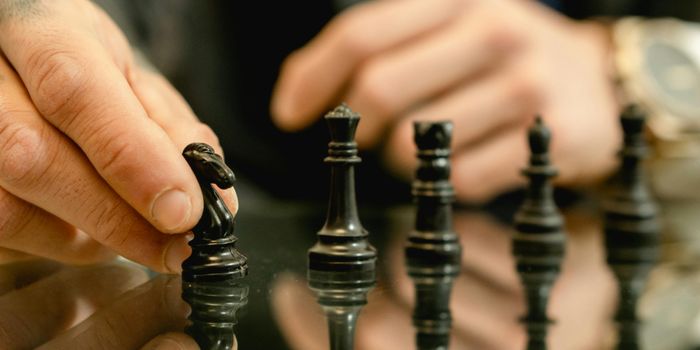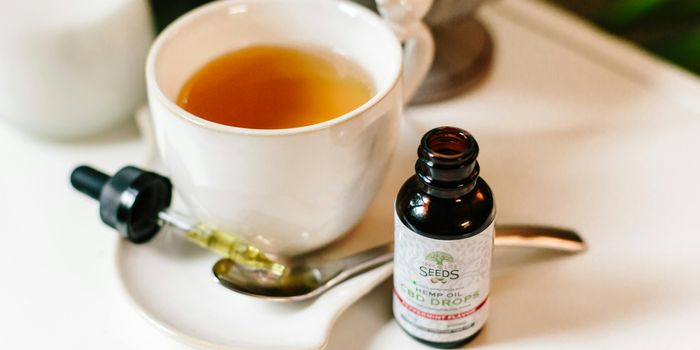Using Cannabis as a Treatment for Neuropathy
When one feels pain it is our nervous system that has processed this sensation. It is how our brain communicates with the rest of our body. The nervous system consists of two parts; the central nervous system, which is the brain and spinal cord. The nerves and nerve pathways throughout the body are considered the peripheral system. When there is damage to a part of the system, pain arises, for the peripheral system symptoms arise like burning and tingling sensations in the limbs. If the nerves lose the ability to transmit signaling than numbness occurs. The clinical term for this is neuropathy. There are many forms of neuropathy just as there are many causes of it. The most diagnosed being peripheral neuropathy caused by diabetes. The long‐term hyperglycemia that occurs with diabetes causes downstream metabolic cascades of polyol pathway hyperactivity, advanced glycation end‐products (AGE)/receptor for AGE (RAGE) reactions and increased reactive oxygen species (ROS). They compromise both endoneurial microvessels and neural tissues through activation of poly‐ADP‐ribose polymerase (PARP), alterations of protein kinase C (PKC) and an increase in mitogen‐activated protein kinase (MAPK), as well as activation of nuclear factor‐(NF)‐κB, resulting in functional and structural changes of peripheral neuropathy. Metabolic abnormalities in the nerve elicit pro‐inflammatory reactions, inducing the release of cytokines, suppression of neurotrophins and migration of macrophages. All of this promotes the development of neuropathy. What this results in is pain and inflammation. The treatments for neuropathy which consist of opioids, antidepressants, and anticonvulsants do not have a high success rate in treating neuropathic pain, and many of the drugs used run a risk of serious side effects. This has people searching for better answers and listening to others when they say cannabis makes them feel better. One may be wondering how can cannabis help nerve damage. Cannabis has been deemed a neuroregenerator, neuroprotector, an anti-inflammatory, and an analgesic. This is exactly the thought process that has led people to use CBD oil for pain. Cannabis inhibits the production of NF-kb and the production of cytokines, and by inhibiting these compounds it decreases inflammation and nociceptive pain. CBD also protects the myelin sheath that covers the nerve. CBD has also been shown to act as a “neuroprotective agent” through several mechanisms, such as “normalizing glutamate homeostasis, reducing oxidative stress, and attenuating glial activation”( Fernandez-Ruiz et al., 2013). When choosing what ratio to use to treat neuropathy it seems that the majority of people respond well to a high CBD ratio such as a 1:4 or a 1:20. Having a little bit of THC involved actually causes synergy and increases the effect of both the cannabinoids. What I often like to suggest is a high CBD tincture and a high THC tincture. The high CBD reduces inflammation well and lowers the production of cytokines. It's easy to use during the day as it does not disorient you or inhibit your short-term memory. The high THC ratio 20:1 works well to change the pain perception for the body. You could look at it as CBD is your regulator and THC is your rescuer. Often when people use two different ratios THC is allocated at night due to it psychoactive abilities. If side effects are too strong one may just go to bed and sleep the high off. THC can also help people sleep which is another reason many choose to use it at night and a high CBD ratio during the day. It is best to be sure you are receiving both cannabinoids. CBD is very important to nerve issues. Normalizing glutamate homeostasis brings signaling transmission into regulation, and many nerve issues occur due to the neurotransmitters GABA and glutamate being out of balance. By having healthy GABA and glutamate transmissions one will feel less nerve pain because signaling is working appropriately.
When we feel pain it is our nervous system that has processed this sensation. This complex chain of neurons is how our brain communicates with the rest of our body. The nervous system consists of two parts; the central nervous system, which is the brain and spinal cord, and the peripheral system which is the nerves and nerve pathways throughout the body and the limbs. When there is damage to a part of the system, pain arises, and for the peripheral system, symptoms arise such as burning and tingling sensations in the limbs. If the nerves lose the ability to transmit signaling than numbness occurs. The clinical term for this is neuropathy. There are many forms of neuropathy just as there are many causes of it. The most diagnosed being peripheral neuropathy caused by diabetes.
The long‐term hyperglycemia that occurs with diabetes causes downstream metabolic cascades of polyol pathway hyperactivity, advanced glycation end‐products (AGE)/receptor for AGE (RAGE) reactions and increased reactive oxygen species (ROS). They compromise both endoneurial microvessels and neural tissues through activation of poly‐ADP‐ribose polymerase (PARP), alterations of protein kinase C (PKC) and an increase in mitogen‐activated protein kinase (MAPK), as well as activation of nuclear factor‐(NF)‐κB, resulting in functional and structural changes of peripheral neuropathy. Metabolic abnormalities in the nerve elicit pro‐inflammatory reactions, inducing the release of cytokines, suppression of neurotrophins and migration of macrophages. All of this promotes the development of neuropathy.
What this results in is pain and inflammation. The treatments for neuropathy which consist of opioids, antidepressants, and anticonvulsants do not have a high success rate in treating neuropathic pain, and many of the drugs used run a risk of serious side effects. This has people searching for better answers and listening to others when they say cannabis makes them feel better.
One may be wondering how can cannabis help nerve damage. Cannabis has been deemed a neuroregenerator, neuroprotector, an anti-inflammatory, and an analgesic. Cannabis inhibits the production of NF-kb and the production of cytokines, and by inhibiting these compounds it decreases inflammation and nociceptive pain. CBD also protects the myelin sheath that covers the nerve. CBD has also been shown to act as a “neuroprotective agent” through several mechanisms, such as “normalizing glutamate homeostasis, reducing oxidative stress, and attenuating glial activation”( Fernandez-Ruiz et al., 2013).
When choosing what ratio to use to treat neuropathy it seems that the majority of people respond well to a high CBD ratio such as a 1:4 or a 1:20. Having a little bit of THC involved causes synergy and increases the effect of both the cannabinoids. What I often like to suggest is a high CBD tincture along with a high THC tincture. The high CBD reduces inflammation well and lowers the production of cytokines. It's easy to use during the day as it does not disorient you or inhibit your short-term memory.
The high THC ratio 20:1 works well to change the pain perception for the body. You could look at it as CBD is your regulator and THC is your rescuer. Often when people use two different ratios THC is allocated at night to cicumvent its psychoactive abilities from hindering projects during the day such as driving or concentrating. By using it at night if side effects are unpleasent one may just go to bed and sleep the high off. THC can also help people sleep which is another reason many choose to use it at night and a high CBD ratio during the day.
It is best to be sure you are receiving both cannabinoids when dealing with neuropathies. CBD is very important to nerve issues. Normalizing glutamate homeostasis brings signaling transmission into regulation, and many nerve issues occur due to the neurotransmitters GABA and glutamate being out of balance. By having healthy GABA and glutamate transmissions one will feel less nerve pain because signaling is working appropriately.
Sources; Br J Pharma, CBD MS, J Diabetes
When we feel pain it is our nervous system that has processed this sensation. This complex chain of neurons is how our brain communicates with the rest of our body. The nervous system consists of two parts; the central nervous system, which is the brain and spinal cord, and the peripheral system which is the nerves and nerve pathways throughout the body and the limbs. When there is damage to a part of the system, pain arises, and for the peripheral system, symptoms arise such as burning and tingling sensations in the limbs. If the nerves lose the ability to transmit signaling than numbness occurs. The clinical term for this is neuropathy. There are many forms of neuropathy just as there are many causes of it. The most diagnosed being peripheral neuropathy caused by diabetes.
The long‐term hyperglycemia that occurs with diabetes causes downstream metabolic cascades of polyol pathway hyperactivity, advanced glycation end‐products (AGE)/receptor for AGE (RAGE) reactions and increased reactive oxygen species (ROS). They compromise both endoneurial microvessels and neural tissues through activation of poly‐ADP‐ribose polymerase (PARP), alterations of protein kinase C (PKC) and an increase in mitogen‐activated protein kinase (MAPK), as well as activation of nuclear factor‐(NF)‐κB, resulting in functional and structural changes of peripheral neuropathy. Metabolic abnormalities in the nerve elicit pro‐inflammatory reactions, inducing the release of cytokines, suppression of neurotrophins and migration of macrophages. All of this promotes the development of neuropathy.
What this results in is pain and inflammation. The treatments for neuropathy which consist of opioids, antidepressants, and anticonvulsants do not have a high success rate in treating neuropathic pain, and many of the drugs used run a risk of serious side effects. This has people searching for better answers and listening to others when they say cannabis makes them feel better.
One may be wondering how can cannabis help nerve damage. Cannabis has been deemed a neuroregenerator, neuroprotector, an anti-inflammatory, and an analgesic. Cannabis inhibits the production of NF-kb and the production of cytokines, and by inhibiting these compounds it decreases inflammation and nociceptive pain. CBD also protects the myelin sheath that covers the nerve. CBD has also been shown to act as a “neuroprotective agent” through several mechanisms, such as “normalizing glutamate homeostasis, reducing oxidative stress, and attenuating glial activation”( Fernandez-Ruiz et al., 2013).
When choosing what ratio to use to treat neuropathy it seems that the majority of people respond well to a high CBD ratio such as a 1:4 or a 1:20. Having a little bit of THC involved causes synergy and increases the effect of both the cannabinoids. What I often like to suggest is a high CBD tincture along with a high THC tincture. The high CBD reduces inflammation well and lowers the production of cytokines. It's easy to use during the day as it does not disorient you or inhibit your short-term memory.
The high THC ratio 20:1 works well to change the pain perception for the body. You could look at it as CBD is your regulator and THC is your rescuer. Often when people use two different ratios THC is allocated at night to cicumvent its psychoactive abilities from hindering projects during the day such as driving or concentrating. By using it at night if side effects are unpleasent one may just go to bed and sleep the high off. THC can also help people sleep which is another reason many choose to use it at night and a high CBD ratio during the day.
It is best to be sure you are receiving both cannabinoids when dealing with neuropathies. CBD is very important to nerve issues. Normalizing glutamate homeostasis brings signaling transmission into regulation, and many nerve issues occur due to the neurotransmitters GABA and glutamate being out of balance. By having healthy GABA and glutamate transmissions one will feel less nerve pain because signaling is working appropriately.
Sources; Br J Pharma, CBD MS, J Diabetes, Chron









